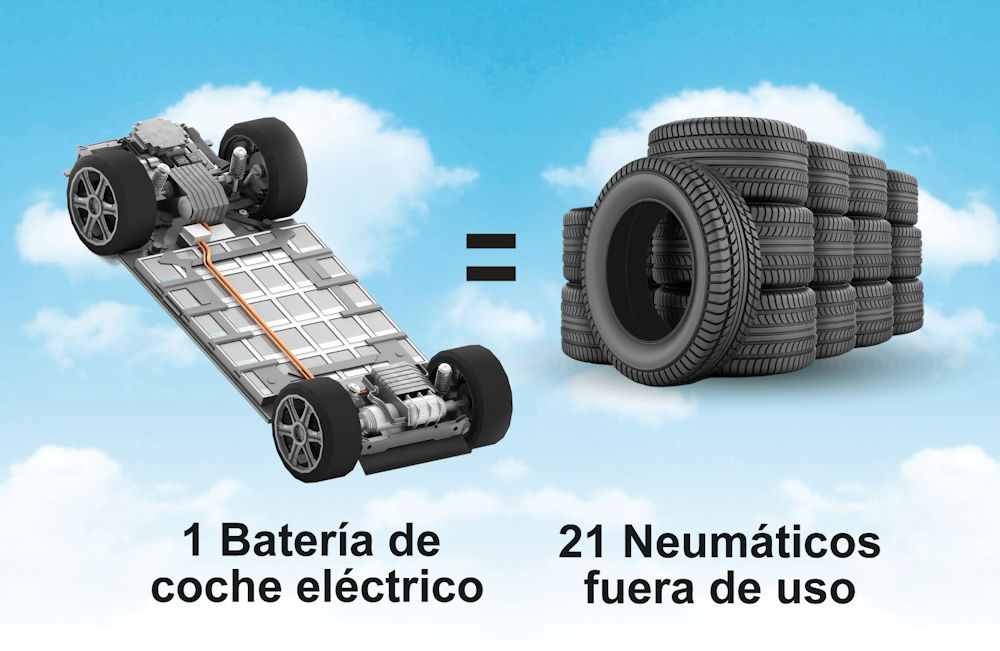Innovation in tyre recycling makes it possible to transform unused tyres into graphitic carbon for electric vehicle batteries
One of the main compounds in End-of-Use tyres is carbon black, which constitutes 22 per cent of their weight and is used as an additive to strengthen the rubber, thus increasing its resistance to traction and wear.
Carbon black can be extracted from ELT through pyrolysis. The recovered carbon black can then be transformed into hard graphitic carbon, an essential component in the anode of lithium-ion batteries in electric vehicles. This method, developed by T-Phite, not only allows tyres to be recycled, but can also be a milestone in the sustainable manufacturing of lithium battery components.
The charging capacity of recovered carbon black anodes is comparable to conventional graphite anodes, but the true value of this innovation, in addition to the significant potential to improve the efficiency and durability of electric vehicle batteries, lies in its contribution to the circular economy and its lower environmental impact, by reducing the need to extract graphite, a resource-intensive process that is harmful to the environment.
In each lithium-ion battery of an electric car there is an average of 52 kg of graphite, 25 per cent of its volume. Its supply comes mostly from China and has become vital at a time of expansion for electric vehicles.
Each battery anode from T-Phite would use the rubber transformed into graphitic carbon from 21 unused tyres.




















